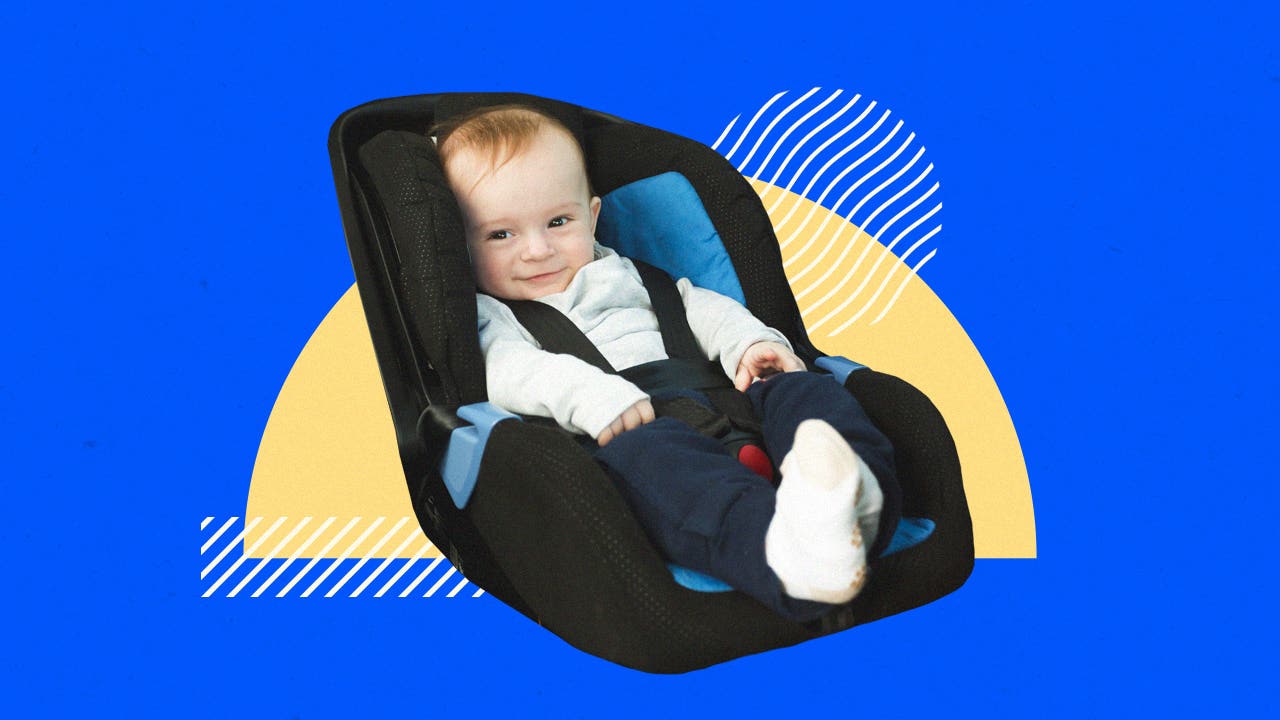Car and booster seat facts and statistics

The Bankrate promise
At Bankrate, we strive to help you make smarter financial decisions. To help readers understand how insurance affects their finances, we have licensed insurance professionals on staff who have spent a combined 47 years in the auto, home and life insurance industries. While we adhere to strict , this post may contain references to products from our partners. Here's an explanation of . Our content is backed by Coverage.com, LLC, a licensed entity (NPN: 19966249). For more information, please see our .
More than 700 child passengers aged 12 and below died in motor vehicle crashes in 2021, the latest year for which data is available. To note, nearly 40 percent were not buckled in. And even when appropriate safety gear like restraints and booster seats are used, they’re used incorrectly nearly half the time, according to the Centers for Disease Control and Prevention (CDC). Reading up on your child’s safety restraint systems could help you keep them safe.
Car seat safety statistics and facts
Car seat safety statistics and car seat death statistics are never easy to read. However, arming yourself with the facts may help to improve the outcome in the event of an accident.
- Child safety seats have been shown to reduce fatal injury by 71 percent for infants aged one and below and by 54 percent for toddlers between one and four years of age. (The National Highway Traffic Safety Administration – NHTSA)
- 69 percent of children riding with unrestrained drivers were also unrestrained, based on known restraint use. (NHTSA)
- 711 children aged 12 and under were fatally injured in a car crash in 2021 and 63,000 were injured in 2020. (CDC)
- 30 percent of children under 4 and 36 percent of those 8 to 12 who passed away in a car accident in 2021 were not using a restraint. (CDC)
- 25 percent of child passengers who passed away were in a car accident that involved alcohol-impaired driving. (CDC)
- Using a booster seat reduces the risk of serious injury in children ages four to eight by 45 percent. (CDC)
- Seat belt use reduces the risk of death and serious injury by about half for older children and adults. (CDC)
- Children under one year old should always ride in a rear-facing car seat. (NHTSA)
Car seat recommendations based on a child’s age and size
Several different types of cars are available to help keep your child safe. Your child’s age and individual needs will likely influence the type of car seat that works best for them.
Rear-facing car seat
- Best for infants, from newborns to three-year-olds
- Designed to mitigate stress to the child’s fragile neck and spinal cord
Forward-facing car seat
- Best for toddlers between the ages of four and seven
- Designed with a buckled harness that limits your child’s movement in the event of an accident
Booster seat
- Best for children between the ages of four and 12
- Raises a child’s body so that the car’s seat belt sits correctly over the child’s hips and chest
Seat belt
- Best for children and adults ages 12 and above, provided they’re big enough so that the belt fits properly
- Should fit snugly across thighs, shoulder and chest
Car and booster seat safety laws by state
If you’re looking for ways to keep your family safe in the car, remember that enforcing seat belt use is one of the best ways to do that. Each state has its own booster seat guidelines and car seat laws.
-
State Must be in safety seat Maximum base fine for a first offense Preference for rear seat Alabama Until age 6 $25 No Alaska Until 57” tall, 65 lbs $50 No Arizona Until age 7, 57” tall $50 No Arkansas Until age 6, 60 lbs $100 No California Until age 8, 57” tall $100 Yes, for children 7 and below who are shorter than 57″ Colorado Until age 8 $81 Yes, for children one year and younger and less than 20 lbs. Connecticut Until age 8 $50 No Delaware Until age 8 $25 Yes, for children 11 and younger and 65″ or less District of Columbia Until age 8 $75 No Florida Until age 6 $60 No Georgia Until age 8 $50 Yes, for children 7 and below Hawaii Until age 10, 4’ 9” tall $100 No Idaho Until age 7 $79 No Illinois Until age 8 $75 No Indiana Until age 8 $25 No Iowa Until age 6 $25 No Kansas Until age 8 $60 No Kentucky Until age 8 $50 for child restraint; $30 for booster seat No Louisiana Until age 9 $100 Yes, for children 12 years and younger Maine Until age 8, 57”, 80 lbs $50 Yes, for children 11 years and younger, and less than 100 lbs Maryland Until age 8, 57” $50 No Massachusetts Until age 8, 57” $25 No Michigan Until age 8, 57” $10 Yes, for children 3 years and younger Minnesota Until age 8, 57” $50 No Mississippi Until age 7, 57” $25 No Missouri Until age 8, 4’ 9” tall, 80 lbs $50 No Montana Until age 5, 60 lbs $100 No Nebraska Until age 8 $25 Yes, for children 7 and younger Nevada Until age 6, 57” tall $500 Yes, for children 2 years and younger New Hampshire Until age 7, 57” tall $50 No New Jersey Until age 8, 57” tall $75 Yes, for children 7 years and younger, less than 57″ tall New Mexico Until age 7, 60 lbs $25 Yes, for children younger than one year in a rear-facing car seat New York Until age 8 $100 No North Carolina Until age 8, 80 lbs $25 Yes, for children 4 and younger under 40 lbs. North Dakota Until age 7 $25 No Ohio Until age 8, 57” tall, 40 lbs $75 No Oklahoma Until age 8, 4” 9’ tall $50 No Oregon Until 4” 9’ and 40 lbs $115 No Pennsylvania Until age 8 $75 No Rhode Island Until age 8, 57”, 80 lbs $85 Yes, for children 7 and younger South Carolina Until age 8 or 57” tall $150 Yes, for children 7 and younger South Dakota Until age 5 and 40 lbs $25 No Tennessee Until age 9 and 4’ 9” tall $50 Yes, for children 8 and younger and less than 4′ 9″ tall Texas Until age 8 and 57” tall $25 No Utah Until age 8 and 57” tall $45 No Vermont Until age 8 and 20 lbs $25 Yes, for children younger than one year or less than 20 lbs Virginia Until age 8 $50 Yes, for children in rear-facing devices Washington Until age 5 and 4’ 9” tall $124 Yes, for children 12 years and younger. West Virginia Until 8 and 4’ 9” tall $20 No Wisconsin Until 8, 57”, 80 lbs $75 Yes, for children 3 and younger Wyoming Until age 9 $50 Yes, for children 8 and younger
Replacing a car seat after a collision
A lesser-known car seat safety fact is that car seats need to be replaced after a collision — even a relatively minor one. Car accidents involve significant forces and those forces get absorbed by the vehicle and its contents. Car seats are designed to absorb some of that force to keep the child in the seat safe.
The plastic of a car seat can be damaged or weakened by a crash, even if the seat doesn’t show any signs of damage and looks like it is fine to use. It’s better to be safe and replace your child’s car seat after a collision to reduce the risk of injury (or worse) should an accident occur in the future.
Under NHTSA guidelines, if any of these apply to your collision, you should replace the car seat:
- The vehicle cannot be driven away from the crash site.
- The door nearest the seat was damaged.
- Any of the passengers in the vehicle sustained injuries.
- The airbags deployed.
- There is visible damage to the seat.
Does car insurance cover car seat replacement?
If you get into an accident, the NHTSA recommends that you replace car seats to keep your children safe. The good news for parents is that insurance companies typically help cover the cost of a new car seat if your policy includes collision coverage. When filing your insurance claim, make sure to inform the insurer that you have a car seat that will need to be replaced.
Frequently asked questions
-
-
Five-point harness car seats should have height and weight limits listed on them. Typically, children are ready to graduate from car seats to booster seats between the ages of five and nine.
-
Your booster seat should note height and weight recommendations on it. When your child is seated in the booster seat, the seat belt should fit snugly across the child’s torso and hips without being uncomfortable.
-
The first step is to make sure your child is properly restrained in the car. Ensure that your child doesn’t exceed the height and weight limits listed on their car seat or booster seat. Never leave children in a hot car — even if you’re just running inside for a moment. Talk to your children about not playing near vehicles and staying away from cars when they’re backing up.
-
Car insurance rates vary a lot between people because insurance companies use multiple factors to calculate your rate, including your driving record, information about your vehicle and personal information about you. That said, finding cheap car insurance doesn’t have to be difficult. One of the easiest ways to find the cheapest car insurance for your situation is to request quotes from several insurance companies for the same coverage types and levels and compare.
-
Some of the most common mistakes people make when using car seats or booster seat include:
- Installing the car seat improperly: Even similar-looking seats may have different installation requirements, and installed seats should move no more than one inch from side to side.
- Placing the chest clip incorrectly: A chest clip that is too low may allow the child to be ejected from the seat. One placed too high could cause a neck injury. In general, the clip should align with the child’s armpits.
- Choosing the wrong seat: In general, children three and under should be in a rear-facing seat, and those four and up should have a forward-facing seat with a harness.
- Using an expired seat: Car seats usually expire six years after they’re made as the plastic becomes more brittle and parts become worn.
-
Related Articles



